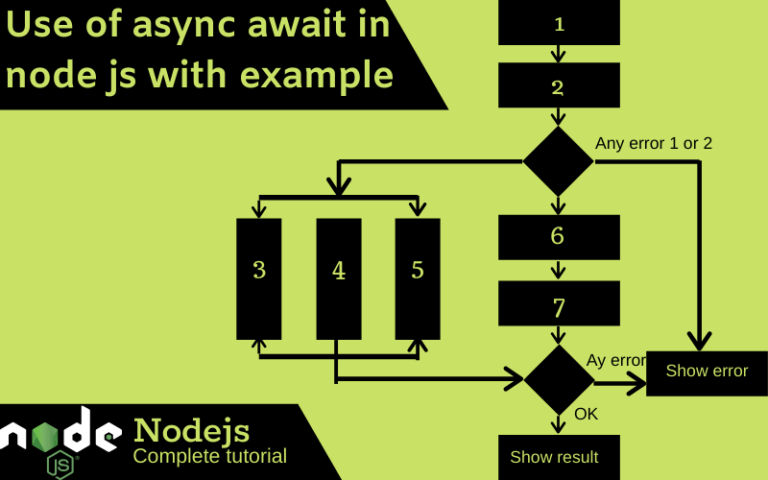

Ele ento retorna o valor final da Promise. Also Promise.all is nice when we are waiting for many tasks simultaneously. A expresso await faz a execuo de uma funo async pausar, para esperar pelo retorno da Promise, e resume a execuo da funo async quando o valor da Promise resolvido. iterable An async iterable or sync iterable. a previously declared variable or an object property). For an overview of promises in Node.js have a look at the article: Promises in Node.js.
NODEJS AWAIT CODE
Any code that uses Promises can be converted to use async/await.

May be either a declaration with const, let, or var, or an assignment target (e.g. Async/Await can be used to write asynchronous code in Node.js that reads like synchronous code and is available in Node since v.7.6 and up (officially rolled out with Node v8 and ECMAScript 2017).

in the outermost scope) we have to use these methods. for await (variable of iterable) statement variable Receives a value from the sequence on each iteration. With async/await we rarely need to write promise.then/catch, but we still shouldn’t forget that they are based on promises, because sometimes (e.g. Together they provide a great framework to write asynchronous code that is easy to both read and write.
If it’s an error, an exception is generated - same as if throw error were called at that very place. The await keyword makes the function pause the execution and wait for a resolved promise before it. The await keyword before a promise makes JavaScript wait until that promise settles, and then: The await keyword can only be used inside an async function. The async keyword before a function has two effects: You can't use await at the top level of a non-module script, only in modules.In the case of an error, it propagates as usual, from the failed promise to Promise.all, and then becomes an exception that we can catch using try.catch around the call. When a module using top-level await is evaluated, it returns a promise to the module loader (like an async function does), which waits until that promise is settled before evaluating the bodies of any modules that depend on it. The entire language is based upon an asynchronous model. If your module can continue to work even if the promise is rejected, you could wrap the top-level await in a try/ catch: // In a module, once the top-level `await` proposal lands The need to master asynchronous calls and design patterns in Node.js is too crucial to be ignored. Typically, top-level await is used in situations where your module won't be able to do its work until the promise is settled and won't be able to do it at all unless the promise is fulfilled, so that's fine: const text = await main() Async/await makes this very easy because to the compiler its just like synchronous code. If the promise is rejected, your module will fail to load. Your module won't finish loading until the promise you await settles (meaning any module waiting for your module to load won't finish loading until the promise settles). You can use await at the top-level of a module. Use a top-level async function that never rejects (unless you want "unhandled rejection" errors). I publish new posts every week or two about JavaScript and Node.js. So if A calls B that calls C, C is only able. When dealing with an array of async/await functions (which return Promises). When you pause them, they only capture the current functions stack. Use top-level await ( proposal, MDN ES2022, broadly supported in modern environments) that allows top-level use of await in a module. Nodes async/await are shallow coroutines. I can't seem to wrap my head around why this does not work.īecause main returns a promise all async functions do.







 0 kommentar(er)
0 kommentar(er)
